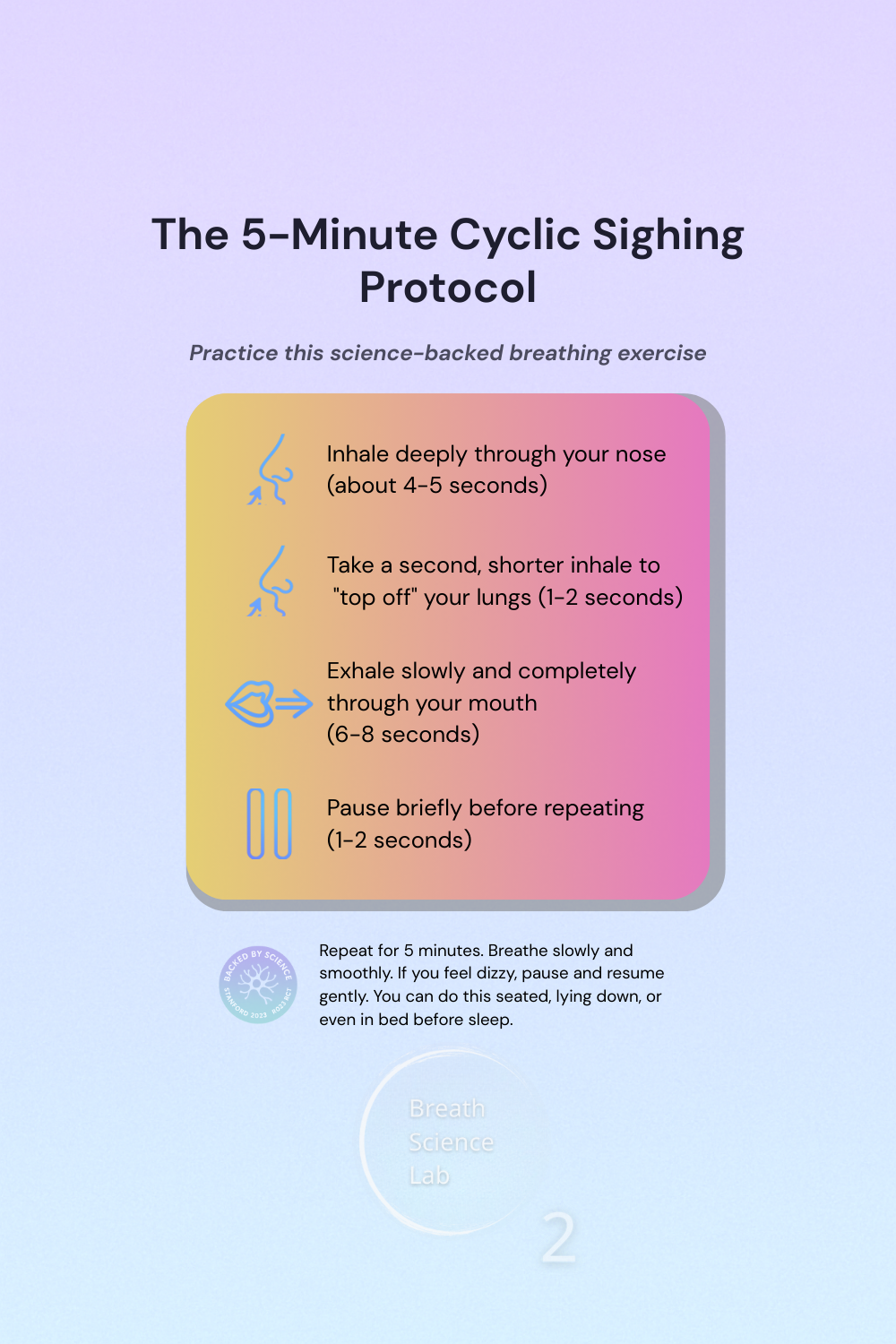The 5-Minute Breathwork Routine That Outperforms Meditation (Backed by Stanford)
Just 5 minutes of exhale-focused breathwork improved mood and lowered stress more than meditation, according to a Stanford RCT. Here's the protocol.

Introduction: The Breathwork vs. Meditation Debate Is Over
For years, mindfulness meditation has been the go-to practice for managing stress. But a groundbreaking 2023 Stanford-led randomized controlled trial (RCT) has shifted the conversation: just five minutes of structured breathwork improved mood more than mindfulness meditation, and matched it in reducing anxiety.
Among the techniques studied, one stood out: cyclic sighing — an exhale-focused breathing practice designed to quickly activate the parasympathetic nervous system. Participants who practiced cyclic sighing daily saw greater improvements in positive affect, significant reductions in respiratory rate, and comparable drops in anxiety levels relative to those who meditated.
This isn't breathwork hype. It's hard data. And it points to a simple, science-backed protocol you can use today. If meditation hasn’t worked for you, the Somatic Breathwork Reset is a safe, 5-minute protocol designed for nervous system recovery.
What the Stanford Study Found
The study compared three types of breathwork (cyclic sighing, box breathing, and cyclic hyperventilation) with traditional mindfulness meditation.
Cyclic sighing emerged as the most effective for:
- Boosting daily positive affect (mood)
- Lowering respiratory rate (a key sign of nervous system calming)
The practice involved just five minutes per day over the course of one month. No apps. No long sessions. Just focused breathing with an extended exhale.
You can read the full study here: PMCID: PMC9873947
Why Exhale-Focused Breathwork Works
In breath science, longer exhales are known to stimulate the vagus nerve, increasing parasympathetic activity. This helps slow the heart, reduce stress hormones, and shift the nervous system out of "fight-or-flight."
Cyclic sighing works by:
- Expanding the lungs fully
- Layering a secondary inhale to stretch the alveoli
- Triggering a long, slow exhale through the mouth
This sequence mimics the natural sigh your body uses to reset. When done intentionally and rhythmically, it becomes a powerful tool for nervous system regulation.
For a deeper dive into how the vagus nerve acts as your body’s recovery switch, see the Vagus Nerve Guide
Try This: The 5-Minute Cyclic Sighing Protocol
Practice this sequence for 5 minutes:
- Inhale deeply through your nose (about 4-5 seconds)
- Take a second, shorter inhale to "top off" your lungs (1-2 seconds)
- Exhale slowly and completely through your mouth (6-8 seconds)
- Pause briefly before repeating (1-2 seconds)
Repeat for 5 minutes. Breathe slowly and smoothly. If you feel dizzy, pause and resume gently. You can do this seated, lying down, or even in bed before sleep.

When to Use It
This protocol is ideal for:
- Morning nervous system priming
- Pre-meeting or pre-performance calming
- Evening wind-down or sleep prep
- Emotional recovery after conflict or overwhelm
It also pairs well with our Parasympathetic Reset Protocol if you want a full-system recovery guide.
🧠 Download the Free Visual Guide
Want a printable version of this protocol? Download our science-backed 5-Minute Cyclic Sighing Protocol as a visual guide for your Recovery Toolkit.
🧭 Related Posts
Want more breathwork tools?
Or try the 2-minute quiz: Find your safest starting breath.

